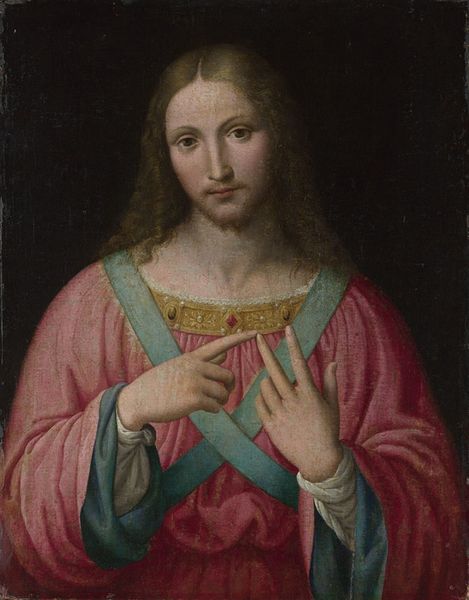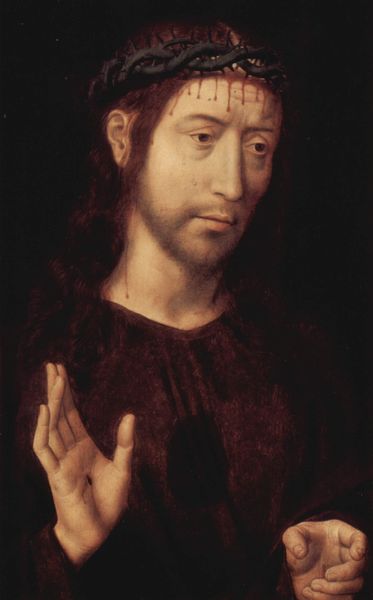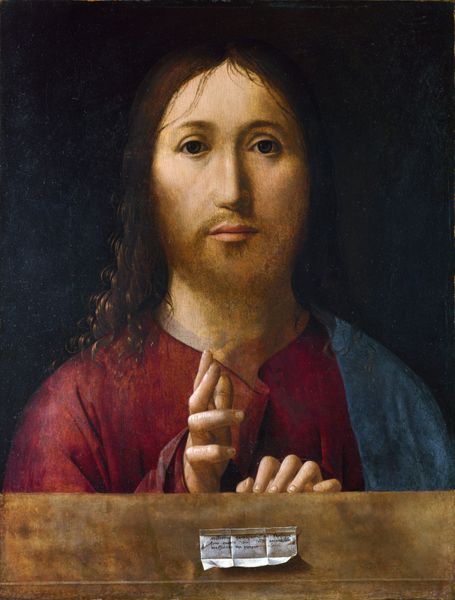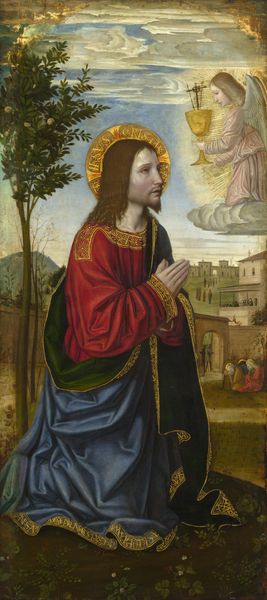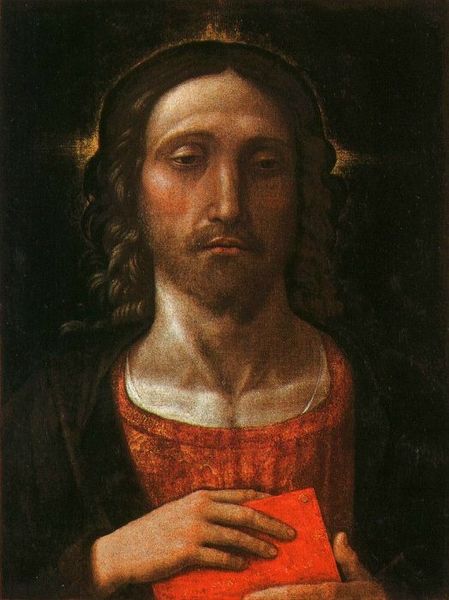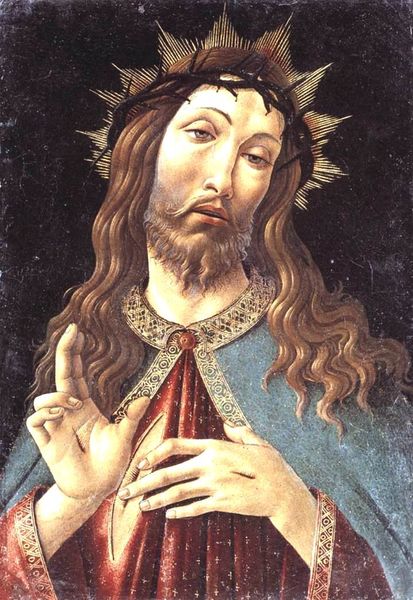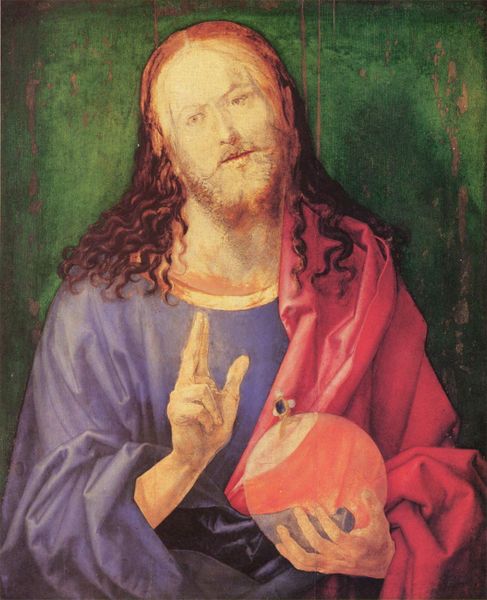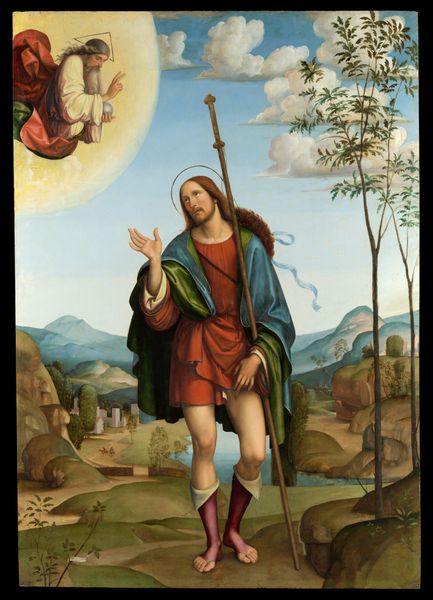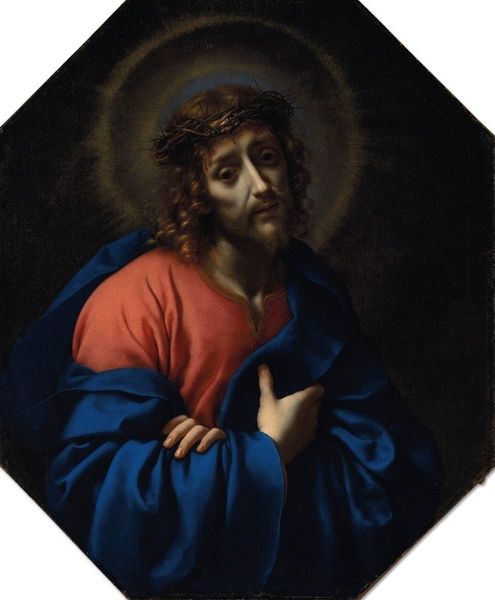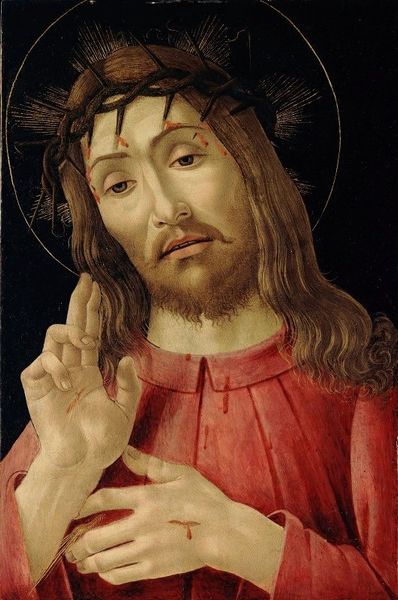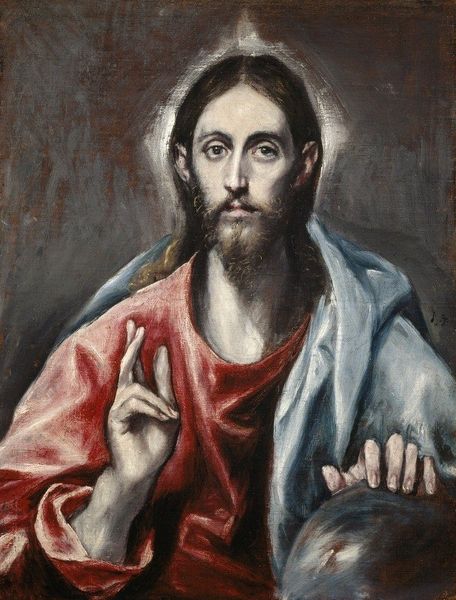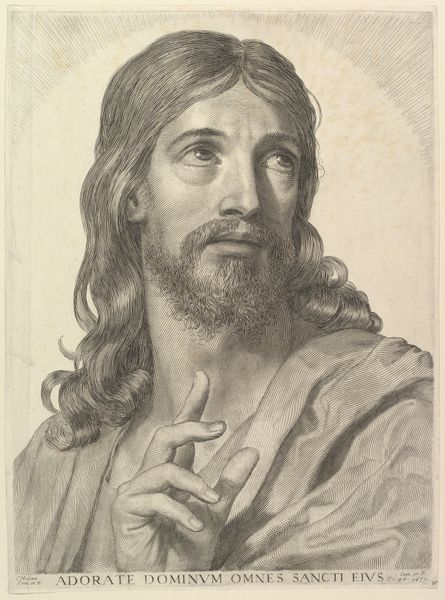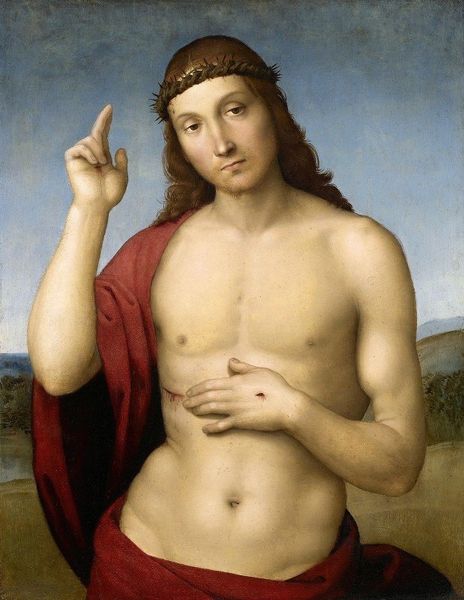
painting, oil-paint
#
portrait
#
high-renaissance
#
painting
#
oil-paint
#
figuration
#
jesus-christ
#
christianity
#
history-painting
#
italian-renaissance
#
realism
#
christ
Dimensions: 58 x 46 cm
Copyright: Public domain
Editor: Here we have Vittore Carpaccio's *Salvator Mundi*, painted around 1520, in oil. There's something striking about how directly Christ's gaze meets ours. What strikes you about it? Curator: The most compelling aspect for me is the enduring symbolic language. Think about the raised hand. The gesture, one of benediction and authority. It echoes across centuries and cultures. But notice also the orb in Christ's left hand: it's both a symbol of earthly power and heavenly grace, reflecting the divine right of kings, while simultaneously representing universal salvation. Editor: The orb looks translucent. Almost as though it contains a tiny galaxy. Is there significance to it, beyond just power? Curator: Precisely! Consider that Renaissance viewers, steeped in Neoplatonism, might interpret the orb as the *anima mundi* – the soul of the world. It’s no accident that it looks celestial, hinting at the interconnectedness of the macrocosm and microcosm. Carpaccio cleverly links the figure of Christ with the cosmos itself. Do you find his portrayal human, or otherworldly? Editor: It's a difficult question, somewhere in between! He seems more accessible than some earlier depictions. It feels very grounded and relatable, especially as the artist tries to realistically create the wrinkles in the robes. Curator: An interesting observation! Even within a sacred image, the artist subtly reveals how symbols function as bridges, connecting the divine with the mundane. Editor: Looking at it that way has totally shifted my understanding. Thanks so much!
Comments
No comments
Be the first to comment and join the conversation on the ultimate creative platform.
